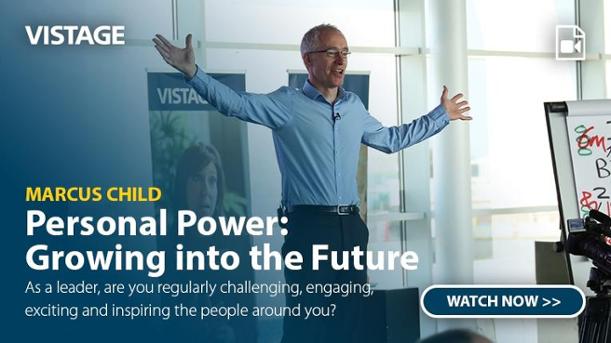
CEO Priorities – Post Brexit.
The worst form of ignorance is that we don’t know that we don’t know! After reading this article you will recognise the need for Strategic Succession Planning, not just as a once in a generation event but here and now and a vital part of your future strategy.
A recent survey of CEO stated that the following top three major challenges facing businesses are:
- The need to deliver financial results
- Strategic Planning for success
- Succession Planning and Management
Previously succession planning and management was left to providence and chance.
Today there are changes in the structure of the workforce, with lean management resulting in a smaller internal talent pool and with far less time for development. This can result in the remaining staff being dissatisfied with the potential for career progression and they leave. These circumstances can have potentially catastrophic impact on business performance and shareholder value, through the loss of critical skills and the effect on company morale.
The challenges of strategic succession planning could increase post Brexit due to workforce demographics and future restrictions on foreign recruitment. It is vital to identify critical current and future roles within your business and to plan for succession now! Growing talent internally and getting role specifications spot on for recruitment is work but the dividends far outweigh the effort. It is nothing less than the Second Leadership Challenge.
Corporate DNA and Business Survival.
I have worked with many inspirational and dedicated business leaders over the years who have created and grown enterprises and inspired their people to greatness. BUT the clock this ticking and everyone in the company is thinking what happens when the boss leaves or retires.
Your greatest legacy as CEO is to choose your successors BUT that involves letting go! Creating Succession structures, through the distillation and embedding of corporate knowledge in process and structure to identify critical roles and future skills needs.. Then delegating all operational tasks through a talent pool of potential successors getting the right people, with the right skills and DNA, in the right place at the right time!
I bet that we can all quote from our own experience of a business, charity or Public Sector organisation that was not the same when “the boss” left. One company that we know was initially valued at £6m. It was owned by two equal shareholder business partners with a ten-year age gap. One sadly died suddenly and there was no shareholder agreement so the wife inherited the business and she parachuted their son into the company as the new MD. After only eighteen months, several key people had left because of the way the company was run, customers lost confidence and went to competitors and the business was sold for £2.5m.
So, WHO are your stars?
Successful strategic succession delivers the diagnostics and processes to create platforms for high growth in those businesses that are re-invigorated with successor DNA, and a Great Strategy that will assure the organisation’s future, these are the prime legacy of the current CEO.
Your stars are not obvious; on one sad occasion, we were called in after the sudden death of a Manufacturing Manager who was in his forties. When we looked at his role he was a “hidden star and critical to the company. He sorted manufacture, delivering on promises and on time. But he also worked on new product development with the vital key customer. He was the “go-to” person on difficult sales presentations and the trusted confidant of the CEO. We had to redesign the structure of the company and he had no less than four successors.
Succession of CEO linked to Future Strategy takes a minimum of two years. WHY because of the role of the CEO as the culture maker and the person who lives the corporate values that people expect, is not easy to replace. But she/he, who would be the successor, must have the values, vision and the skills to take the business to the next level. For this the company must have a thorough understanding of what role the new CEO is expected to fulfil in the context of where the company needs to be in terms of strategy. (Being better and different to the competition!)
But it is the PEOPLE who make the business, strategy is the design of a plan for the way forward but WHO are the ones that will make it happen?
The Internal Succession Crisis - WHO?
So, ask yourself the following simple questions:
- Who is vital to the success of the business? Ask, what makes us stand out and why do our customers really buy from us?
- Who gets paid the most and why?
- Who maintains the best customer relationships?
- Who is the most productive team member?
- Who develops our new products and improves our services?
- Who is the best and most successful sales person?
- Who provides the “glue” to put things together and make things happen?
- Who is the best leader and why?
- Who is the best manager and why?
The approach to succession and evaluation of critical roles requires a more comprehensive structure, but I bet that when you answer the above questions they will help you to get started and provide a better understanding of where your corporate knowledge is now, what are your critical roles and who your key people really are!
Strategic Succession for Business Thrival not just Survival!
This is a big deal 100,000 businesses fail each year due UK wide to lack of succession planning (Passing the Baton Report dti 2004) and post Brexit we need not only to save these companies but get to understand WHO is critical to the success of these businesses. WHY because we need to PASS THE BATON to the next generation not just for survival but for high growth!
This issue applies to large multi-national businesses as to medium and smaller businesses. BUT succession is far more challenging than choosing a person who can do your job, a like for like successor. Why, because your job as current CEO is not the job of the future CEO and this applies to other critical roles within your organisation.
If you need to address these issues, Succession, identifying your critical roles and people and the link to great strategy, then your next step is to book a place on the Vistage CEO Strategic Succession - Second Leadership Challenge workshop in your area.
More from Vistage:

